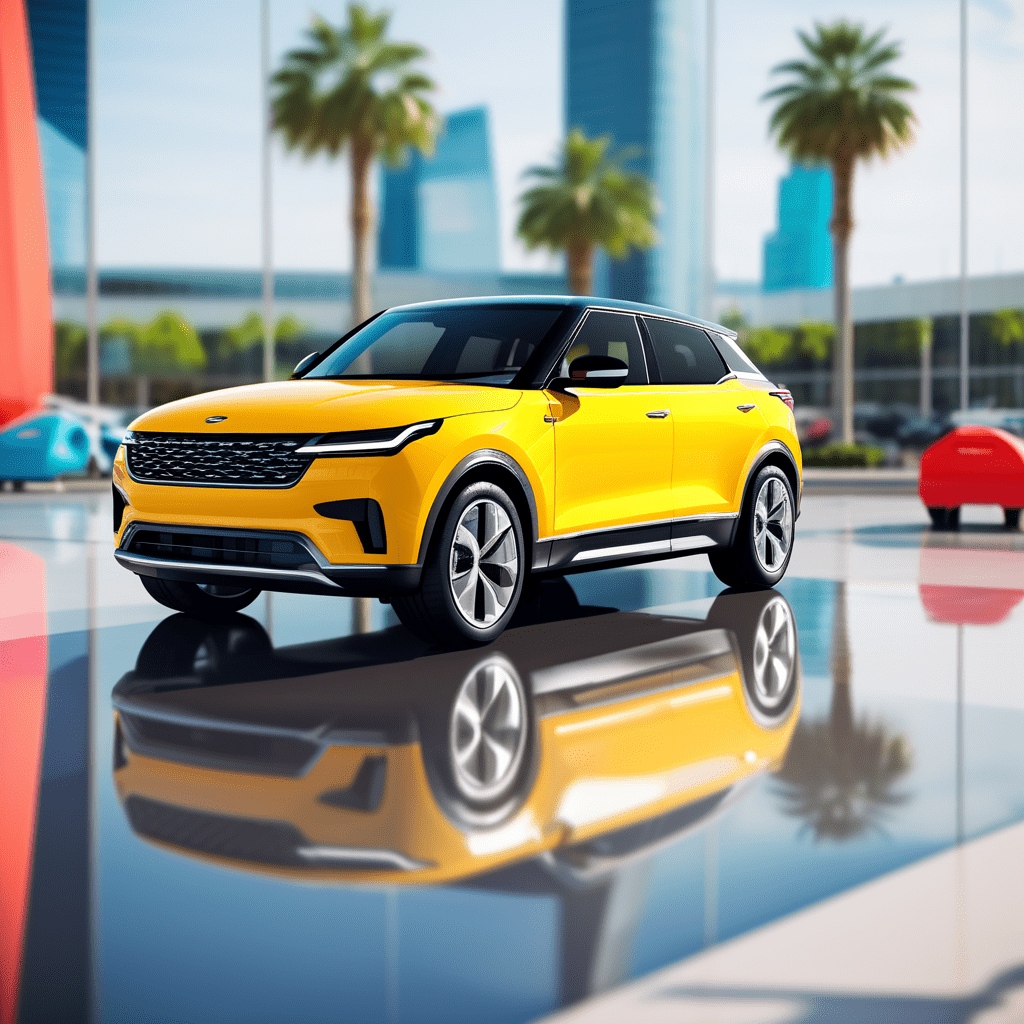
A simple (but effective) step-by-step guide to build a targeted SEO marketing strategy for your car dealership.
Introduction
For car dealerships looking to increase auto sales and establish a strong online presence, Search Engine Optimization (SEO) is a crucial tool to enhance visibility, attract potential car buyers, and thrive in the competitive automotive market With the growing trend of online car shopping and the importance of digital marketing in the automotive industry, optimizing for SEO can significantly boost the visibility of car dealerships and connect them with a broader audience of car shoppers In this comprehensive guide, we will explore the significance of SEO for car dealerships and provide actionable strategies to drive auto sales online
1 Identify Your Target Market and Define Your Dealership’s Specialties
The first step in driving auto sales online is to identify your target market, such as new car buyers, used car shoppers, or specific car models’ enthusiasts Clearly define your dealership’s specialties, whether you offer luxury vehicles, electric cars, or a wide range of affordable cars, and showcase it throughout your website and content to resonate with your audience and establish your dealership’s expertise
Market research:
Start by conducting thorough market research to understand your prospects’ demographics, preferences, and buying behavior. Use this data to create customer personas that represent your target market segments.
Competitive Analysis:
Analyze your competitors and identify market gaps and areas where your dealership can excel. This will help you position your business uniquely and offer something different from others.
Define your Unique Selling Proposition (USP):
Clearly articulate what makes your dealership different from others. Whether it’s exceptional customer service, exclusive offers or a specific niche in the market, your USP should be compelling and resonate with your target audience.
Specialized services and products:
Define your dealership’s specialties – whether it’s a focus on specific vehicle types (e.g. electric cars, luxury cars) or unique services (e.g. personalized financing, green options). Highlight these specialties in your marketing materials.
Create targeted marketing campaigns:
Develop marketing campaigns tailored to your designated target market. Use online and offline channels, including social media, email marketing and traditional advertising, to effectively reach your audience.
Use online platforms:
Use the power of online platforms to increase visibility. Ensure your dealership has a user-friendly website and consider using e-commerce features to facilitate online shopping.
Customer feedback and customization:
Collect feedback from your customers regularly to understand their evolving needs. Use this information to tailor your dealership’s offerings and services to align with market trends and customer expectations.
2 Optimize Website Content with Relevant Car Dealership Keywords
Optimize your website content by incorporating relevant car dealership keywords that reflect your car inventory, brands, and services Use keyword-rich s, meta descriptions, and headers to improve search discoverability and rank higher in search engine results

Keyword research:
Start by doing thorough keyword research to identify terms and phrases that potential customers are likely to use when searching for information about a car. Use tools like Google Keyword Planner, SEMrush, or Ahrefs to discover high-traffic, low-competition keywords that are specific to your seller’s offerings.
Long-tail keywords:
Include long-tail keywords to target more specific and narrowly defined search queries. For example, instead of “used cars,” consider phrases like “certified pre-owned Toyota Camry in [your city].” Long-tail keywords often have less competition and attract more qualified leads.
Keywords by location:
Emphasize your dealership’s geographic location in your keywords to capture local searches. Include terms like your city, neighborhood, or region to connect with potential customers near you. For example, “luxury SUV dealer in [your city].”
Vehicle specific keywords:
Highlight the brands and models you specialize in. Use keywords that reflect the makes and types of vehicles you offer, such as “new Honda Accord” or “used Ford trucks for sale.” This will ensure that your content is in line with the specific preferences of potential buyers.
Include transaction keywords:
Include keywords related to transactions to attract users at different stages of the purchase process. Phrases such as “car financing options,” “best car loan rates,” or “trade-in value evaluation” may appeal to individuals researching financing or trade-in options.
Optimize meta tags and descriptions:
Pay attention to meta tags, titles and descriptions on every page of your website. Make sure they contain relevant keywords and provide concise and compelling summaries that encourage users to click through from the search engine results pages (SERPs).
3 Create Informative and Engaging Car Content
Create informative and engaging car content that showcases your car inventory, vehicle reviews, and the benefits of buying from your dealership Use blog posts, car comparisons, and car buying guides to captivate potential car buyers and demonstrate your dealership’s value in the automotive market
Understand your audience:
Tailor your content to your target audience. Are you reaching out to seasoned car enthusiasts, potential buyers or individuals interested in maintenance tips? Knowing your audience allows you to speak directly to their interests and needs.
Stay informed about industry trends:
The automotive industry is constantly evolving. Keep up with the latest trends, technological advances and emerging models. Include this information in your content to showcase your expertise and provide valuable information to your audience.
Create impressive headlines:
Grab attention with enticing headlines. Whether it’s a list of the “10 Best Fuel-Efficient SUVs” or a comprehensive guide to “Navigating Electric Vehicle Charging Networks,” compelling headlines will pique interest and encourage readers to dive into your content.
Use eye-catching visuals:
A picture is worth a thousand words, and this is also true in the automotive world. Include high-quality images, infographics, and videos to complement your written content. Visuals not only improve understanding, but also make your content more shareable and memorable.
Provide in-depth reviews and comparisons:
Consumers often turn to reviews when making car decisions. Offer comprehensive and unbiased reviews of new models with an emphasis on key features, performance metrics, safety ratings and user experience. Additionally, comparing similar models can help potential buyers make an informed choice.
Offer practical maintenance tips:
Help your audience extend the life of their vehicles by sharing practical maintenance tips. Whether it’s a guide to winterizing your car, changing your oil or changing your tires, practical advice builds confidence and positions you as a trusted source of information.
Tell engaging stories:
Humanize your content by incorporating personal anecdotes, success stories, or recounting remarkable journeys. Connecting emotionally with your audience will make your content more engaging and memorable.
4 Utilize Long-Tail Keywords for Specific Car Searches
Incorporate long-tail keywords into your content to target specific car searches, such as “luxury SUV dealership in [your location]” or “best electric cars for sale” Long-tail keywords can attract highly targeted traffic from motivated car buyers looking for specific models or features
Exact features and specifications:
Long keywords allow users to specify specific features, makes, models or specifications that they want in a vehicle. Whether it’s “economy hybrid sedan” or “four-wheel-drive SUV with third-row seating,” these keywords guide search engines to deliver results that exactly match the buyer’s criteria.
Narrowing down location and availability:
For those looking for a specific car in their area, incorporating location-based long tail keywords can be extremely beneficial. Phrases like “used Honda Accord for sale in [city]” or “new Toyota Camry dealership near me” will ensure that search results are not only relevant to the model you’re looking for, but also nearby.
Clarification of budget constraints:
Long-tail keywords are powerful tools for narrowing down options within a specific price range. For example, a user can enter “affordable electric cars under $30,000” to filter out vehicles that are out of their budget, simplifying the search process and saving time.
Catering according to specific preferences:
With the development of automotive technology, the preferences of car buyers are also growing. Long-tail keywords allow users to express subtle preferences, such as “luxury electric SUV with autonomous driving capabilities” or “compact hybrid with advanced safety features,” ensuring that search results accurately match their unique requirements.
Staying Competitive in SEO:
For businesses in the automotive industry, incorporating longtail keywords into their online content is critical to maintaining a competitive edge in search engine rankings. Creating content that matches specific phrases that users enter into search engines increases visibility and increases the likelihood of attracting qualified leads.
5 Implement Local SEO for Targeted Car Searches
For car dealerships serving specific locations, implement local SEO strategies to optimize for location-based car searches Ensure your dealership’s name, address, and phone number (NAP) are consistent across online directories and utilize Google My Business to enhance your local presence

6 Leverage Social Media for Car Marketing
Leverage social media platforms to showcase your car inventory, special promotions, and customer testimonials Social media exposure can lead to increased engagement and broaden your reach within the automotive community
Choose the right platform:
Identify the social media platforms most frequented by your target audience. Whether it’s Instagram for visual appeal, Facebook for community building, or Twitter for real-time updates, tailor your strategy to platforms that align with your dealership’s goals.
Visual Storytelling:
Capitalize on the visual nature of social media. Share high-quality images and videos that showcase your inventory, emphasize key features, and highlight the overall experience of owning a vehicle from your dealership.
Connect with your audience:
Actively engage with your audience by responding to comments, messages and mentions. Create a sense of community by encouraging discussions, asking for opinions, and sharing relevant content that sparks conversation.
Regular Updates and Timely Content:
Keep your audience informed with regular updates on new arrivals, promotions and industry news. Share timely content related to automotive trends, events and seasonal promotions to maintain a dynamic and relevant presence.
Use influencer collaboration:
Collaborate with influencers in the automotive space to expand your reach. Influencers can provide authentic testimonials, write reviews and generate buzz around your dealership, especially among their dedicated followers.
Video Content and Live Streaming:
Take advantage of the popularity of video content. Create engaging videos, such as virtual tours of vehicles, behind-the-scenes glimpses of your dealership, and live streaming events. Live Q&A sessions can also promote direct interaction with your audience.
Run targeted advertising campaigns:
Harness the power of targeted advertising. Use social media advertising platforms to reach specific demographics, ensuring your marketing efforts are seen by the people most interested in your vehicles and services.
7 Collaborate with Automotive Influencers and Car Enthusiasts
Collaborate with automotive influencers, car enthusiasts, and automotive bloggers to amplify your reach and credibility Partnerships can attract more car buyers and establish you as a reputable car dealership
Identify Relevant Influencers:
Begin by identifying influencers and enthusiasts whose content aligns with your dealership’s values and target audience. Look for individuals with a substantial following and a genuine passion for automobiles.
Personalized Outreach:
Craft personalized outreach messages when approaching influencers. Clearly communicate why you believe a collaboration would be mutually beneficial, emphasizing shared values and goals.
Co-Creation Opportunities:
Explore opportunities for co-creating content. This could include sponsored reviews, test drives, or exclusive behind-the-scenes looks at your dealership. Collaborative content adds authenticity and credibility.
Engage on Social Media:
Actively engage with influencers and enthusiasts on social media platforms. Like, comment, and share their content to build a genuine connection. This engagement increases the likelihood of them reciprocating interest in your dealership.
Exclusive Events and Test Drives:
Extend invitations for exclusive events and test drives. Allowing influencers and enthusiasts to experience your inventory firsthand can lead to authentic endorsements and positive reviews.
Leverage Their Expertise:
Acknowledge and leverage the expertise of influencers. Seek their opinions on industry trends, new vehicle releases, and customer preferences. Their insights can inform your dealership’s strategies.
Feature User-Generated Content:
Encourage enthusiasts to share their experiences with your dealership. Feature user-generated content on your social media channels and website, showcasing the diverse perspectives of satisfied customers.
Provide Exclusive Offers:
Offer exclusive deals or incentives to influencers and their followers. This not only adds value to their collaboration but also attracts their audience to explore your dealership.
Build Long-Term Relationships:
Focus on building long-term relationships with influencers and enthusiasts. Consistent collaboration over time fosters a sense of loyalty and can result in ongoing positive exposure for your dealership.
Measure and Analyze Impact:
Implement tracking tools to measure the impact of collaborations. Monitor metrics such as website traffic, social media engagement, and lead generation to assess the effectiveness of your influencer partnerships.
8 Utilize Video Content for Virtual Car Showcases
Utilize video content to showcase your car inventory, virtual car tours, and customer testimonials Video content can provide a more immersive experience for potential car buyers and demonstrate your commitment to showcasing cars professionally

9 Showcase Testimonials from Satisfied Car Buyers
Showcase testimonials from satisfied car buyers to demonstrate your dealership’s commitment to customer satisfaction Testimonials can provide social proof and encourage potential car buyers to consider purchasing from your dealership
Capturing the customer experience:
Authenticity Matters:
When choosing testimonials, prioritize authenticity. Choose real reviews that reflect the diversity of your customer base. Authenticity builds trust and resonates with potential buyers.
Various reviews:
Show different testimonials representing different demographics, vehicle preferences and shopping journeys. This diversity demonstrates your dealership’s ability to meet a wide range of customer needs.
Personalized Stories:
Share personalized stories that highlight specific aspects of the shopping experience. Whether it’s exceptional customer service, a smooth financing process or finding the perfect vehicle, these stories create an emotional connection.
Multimedia testimonials:
Enhance your references with multimedia elements. Include photos or videos of happy customers sharing their experiences. Multimedia content adds depth and credibility to testimonials.
Integration into marketing materials:
Seamlessly integrate testimonials into your marketing materials. List them on your website, brochures and across social media platforms. Consistent visibility reinforces the positive image of your dealership.
Emphasize specific benefits:
Encourage customers to highlight specific benefits they have experienced, such as post-purchase support, maintenance services or exclusive dealer benefits. This information may influence potential buyers.
Encourage cross-platform reviews:
Actively encourage satisfied customers to leave reviews on various online platforms. Positive online reviews not only add to your dealership’s reputation, but also influence consumers during their research phase.
Responsive Engagement:
Respond to testimonials and reviews with gratitude. Show appreciation for customer feedback and address any issues immediately. Responsive engagement demonstrates your commitment to customer satisfaction.
Events with customer response:
Host events where satisfied customers can share their experiences in person. This can be a powerful way to connect with potential buyers on a personal level and create a sense of community around your dealership.Continuous update:
Update your testimonials regularly to keep the content current. As your dealership evolves and introduces new services or features, make sure your references reflect the current strengths of your business.
10 Monitor Performance and Adapt
Regularly monitor your website’s SEO performance through analytics tools Analyze website traffic, lead generation metrics, and keyword rankings to refine your SEO strategies and effectively drive auto sales online
Conclusion
Mastering SEO is essential for food trucks to boost search visibility, engage customers, and thrive in the mobile dining scene. Identify your audience, optimize with keywords, and create compelling content. Use long-tail keywords, implement local SEO, and leverage social media. Collaborate with influencers, share video experiences, and showcase customer testimonials. Monitor and adapt your SEO for ongoing success. Elevate your online presence, attract foodies, and become a sought-after destination.
visit:https:https://csspmstimes.com/
